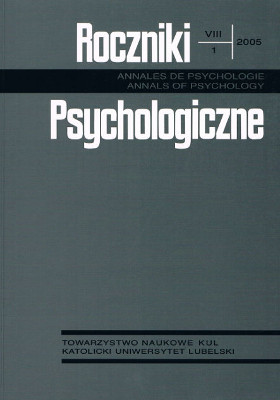The brand associative structure in the marketing strategy of brand extension
Abstract
Nowadays, one of the widely popularised marketing strategies is brand extension, which means marking new products with an existing brand. The efficiency of this strategy can be improved by means of a change introduced into the brand association structure which consists in neutralizing negative associations with the extended products. In this study on associations with Palmolive brand, the method of associative affinity index developed by Klein and Kernan (1988) and the methodology of examining the affinity between the original product and the extended products of the same brand developed by Aaker and Keller (1990) have been used. This study supports the results of Aaker and Keller's empirical analyses which indicate that in order to develop effective strategies of brand extension, the analysis of associations should be combined with examination of category affinity between the products that are given the same brand.
References
Altkorn, J. (1997). Rozciąganie marki. Aida-Media. Teoria i praktyka reklamy, 2, 4-8.
Altkorn, J. (1999). Strategia marki. Warszawa: Polskie Wydawnictwo Ekonomiczne S.A.
Falkowski, A. (2002). Praktyczna psychologia poznawcza: marketing i reklama. Gdańsk: GWP.
Falkowski, A., Tyszka, T. (2001). Psychologia zachowań konsumenckich. Gdańsk: GWP.
Fiske, S. T., Pavelchak, M. A. (1993). Reakcje afektywne oparte na przetwarzaniu kategorialnym a reakcje afektywne oparte na przetwarzaniu analitycznym. Rozwinięcie w terminach koncepcji schematów wyzwalających afekt. W: T. Maruszewski (red.), Poznanie, afekt, zachowanie (s. 53-101). Warszawa: PWN.
Kleine, R. E., Kernan, J. B. (1988). Measuring the meaning of consumption objects: An empirical investigation. Advances in Consumer Research, 15, 498-504.
Lingoes, J. C., Borg, I. (1978). A direct approach to individual differences scaling using increasingly complex transformations. Psychometrica, 43, 491-519.
Misiak, I. (1997). Znaczenie struktury skojarzeniowej znaku towarowego w strategiach promocyjno-reklamowych. Implikacje dla strategii rozszerzania znaku towarowego (mps pracy magisterskiej, Uniwersytet Łódzki).
Pachnowska, B. (1997). Pamiętam treść, ale co to była za nazwa...? Aida-Media. Teoria i Praktyka Reklamy, 2, 10-11.
Skrzypczak, W. (1996). Formułowanie strategii marki. Handel Wewnętrzny, 5-6, 13-16.
Szalay, L. B., Deese, J. (1978). Subjective meaning and culture: An assessment through word associations. Hillsdale, NJ: Lawrence Erlbaum Associates.
Tyszka, T. (2000). Psychologia ekonomiczna. W: J. Strelau (red.), Psychologia. Podręcznik akademicki (t. 3, s. 351-378). Gdańsk: GWP.
Urbanek, G. (1996). Rozszerzanie marki na nowe wyroby. Marketing i Rynek, 6, 7-14.
Copyright (c) 2005 Roczniki Psychologiczne

This work is licensed under a Creative Commons Attribution-NonCommercial-NoDerivatives 4.0 International License.


